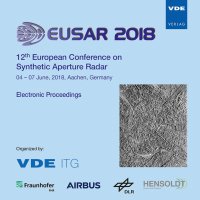Contribution of ocean wave third-order statistics to the radar backscatter modulation by internal waves
Konferenz: EUSAR 2018 - 12th European Conference on Synthetic Aperture Radar
04.06.2018 - 07.06.2018 in Aachen, Germany
Tagungsband: EUSAR 2018
Seiten: 5Sprache: EnglischTyp: PDF
Persönliche VDE-Mitglieder erhalten auf diesen Artikel 10% Rabatt
Autoren:
Liu, Lei; Zhu, Yu; Lyu, Zheng; Liu, Shuhao (Institute of Spacecraft System Engineering, China Academy of Space Technology, Beijing 100094, China)
Chong, Jinsong (Institute of Electronics, Chinese Academy of Sciences, Beijing 100190, China)
Wang, Xiaoqing (Institute of Microelectronics, Chinese Academy of Sciences, Beijing 100029, China)
Chen, PengZhen (Bosoninstrument LTD, Beijing 100084, China)
Inhalt:
Modulation model of radar backscatters is an important section in the remote sensing of oceanic internal wave by synthetic aperture radar (SAR). Published papers related with the modulation models were analyzed mainly based on the hypothesis that ocean surface waves are Gaussian distributed. However, this is not always true for the complicated ocean environment. Researches have showed that the measurements are usually bigger than the values predicted by modulation models for the high frequency radars (X-band and above). A new modulation model was proposed which takes the third-order statistics of the ocean surface into account. It takes the situation into consideration that the surface waves are Non-Gaussian distributed under some conditions. In this paper, this model was verified by the experimental measurements recorded in a wind wave tank. Further discussion was made about applicability of this model that it performs better compared with the traditional modulation model for the high frequency band radar.


